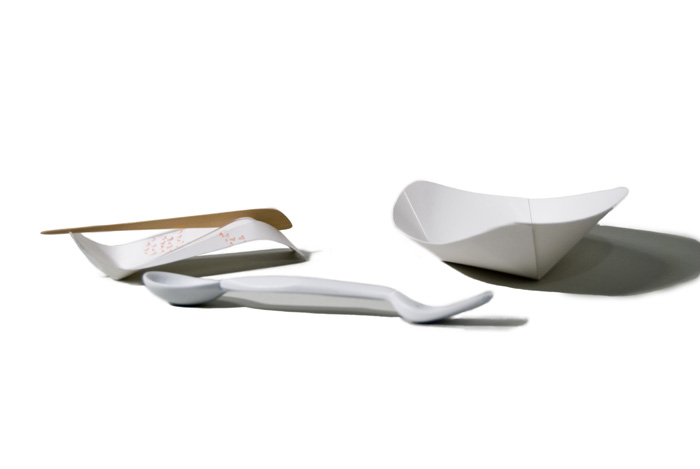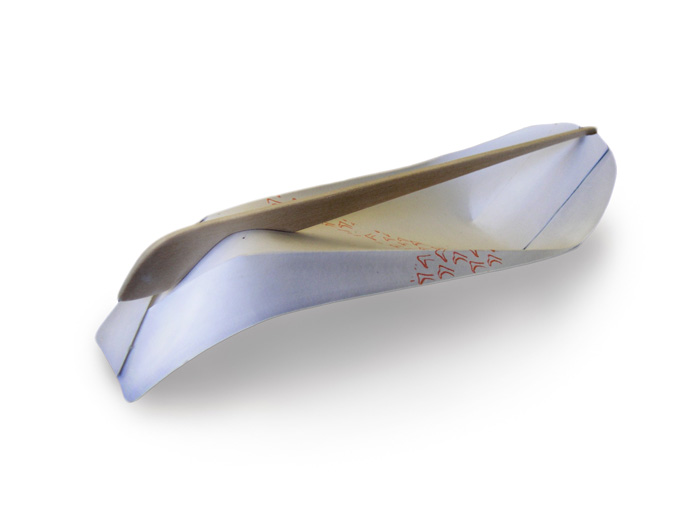
Kaki Lima Collection - An attempt to create beautiful, functional forms from simple and available materials and construction methods. Each piece of the collection can be held or set down while eating.

Kaki Lima Collection - Meant to be 'tableware' for a roving band of street carts, the collection seeks to meld beauty, economy, ecology, and function. Focus was given to materials with established use as disposable and that had minimal waste stream. Each piece of tableware can be made recyclable or biodegradable.

Kaki Lima Carts - Five mobile carts form in impromptu restaurant, provide seating, and a wider variety of dishes than would normally be available from street vendors.

Satay Dish - Using die-cut and folded paper to create a unique form, the satay dish holds a serving of grilled meat and provides a well for dipping sauce.

Satay Development - Prototype iterations exploring construction, form, and scale.

Nasi Goreng/Salad Bowl - This dish, constructed of die-cut paper can be folded in two directions and imprinted with different logo, signifying its use for cold salad or hot fried rice.

Rice Bowl Sketches - Iterations, from basic form studies to more rigorous structure and stability test prototypes.

Spork - Sporks should be a viable option in any tableware project. This one can be used as a single utensil or the fork and spoon can be snapped apart.

Paperware Die-cuts - Cut patterns, including printing, for the rice bowl and satay dish.

Logo Development - Early sketches and final design. Kaki Lima literally translates from Indonesian to mean 'five feet.'

Satay Cart Sketches - While not an integral part of the project, it helped to make a few pages of cart sketches to help realize the project's context.
gLike